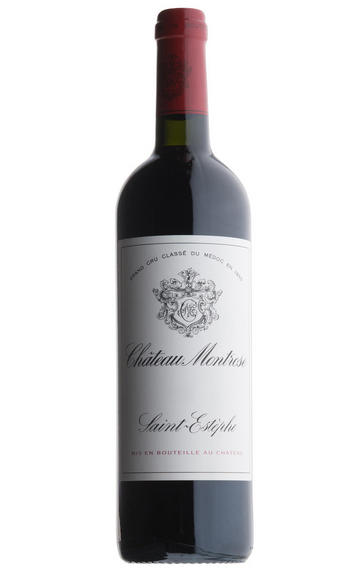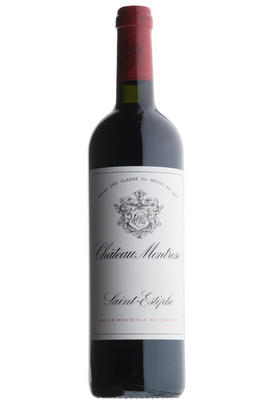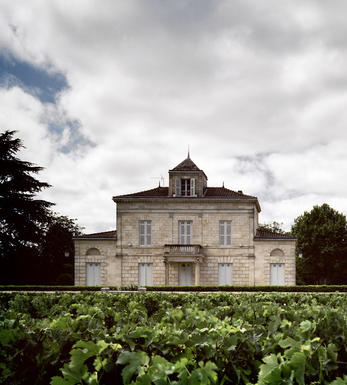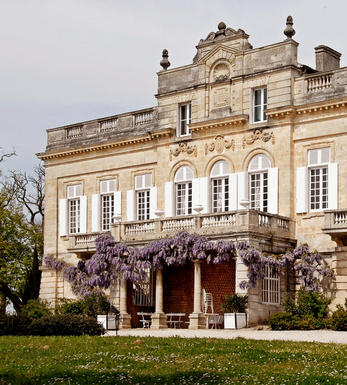
2021 Château Montrose, St Estèphe, Bordeaux

Critics reviews
The 2021 Montrose is very clean and precise on the nose. You could almost describe it has clinical, crushed stone infusing the black fruit and briar. It is not as intense as the previous two vintages, which is to be expected, though the Cabernet Sauvignon is expressive. The palate is medium-bodied with sappy black fruit and fine acidity; a Monrose that is very tensile and focused. Moderate grip and volume, this is a more slimline version of recent vintages, a reflection of the growing season. Maybe it just misses the bravura finish that one has almost come to expect from this estate, yet it has the potential to become an aristocratic, classic Montrose.
Drink 2025 - 2050
Neal Martin, Vinous.com (May 2022)
The 2021 is a fine choice for Montrose fans who want to drink the Grand Vin without waiting for decades. I imagine the slightly high amount of Merlot also helps in giving the Grand Vin a measure of suppleness that is rarely found in Montrose. Gentle extractions bring out gorgeous purity in the fruit. Scorched earth, liquorice, rose petal and blood orange develop in the glass, followed by a kick of Montrose structure on the finish. The 2021 is not an especially typical Montrose, but it is an undeniably attractive wine. The 13.1% alcohol has not been seen here in years.
Drink 2031 - 2051
Antonio Galloni, Vinous.com (May 2022)
This has depth on the palate, inky purple with grilled almond, fennel, cassis, blackberry, bilblerry, waves of fruit set against strong, austere tannins that give excellent structure but not a lot of generosity. This is a serious, signature Montrose that is not an early drinker. Juicy on the finish, one to recommend. 55% new oak. Pierre Grafeuille has come on board as director since March 1, and will be taking over fully from Hervé Berland as of October 1.
Drink 2028 - 2044
Jane Anson, JaneAnson.com (May 2022)
62% Cabernet Sauvignon, 31% Merlot, 6% Cabernet Franc, 1% Petit Verdot.
Deep crimson with smudgy rim. The most subtle of the Montrose in this line-up. The tannins are a little drier and paper-fine but layered. Doesn't have the intensity of the 2019 but it is darkly refined. A restrained beauty.
Drink 2030 - 2046
Julia Harding MW, JancisRobinson.com (October 2023)
This young classic, reminiscent of the estate's 1996 but far better, is a blend of 62% Cabernet Sauvignon, 31% Merlot, 6% Cabernet Franc and 1% Petit Verdot.
The remarkable 2021 Montrose gets my nomination for the title of "wine of the vintage" in the Médoc. Wafting from the glass with a deep bouquet of cassis and dark berries mingled with subtle hints of mint, orange, pencil shavings and spices, it's medium to full-bodied, deep and concentrated, with a layered and multidimensional core of fruit underpinned by beautifully ripe, refined tannins. Concluding with a long, resonant finish, it entirely transcends the limitations of the year.
Drink 2031 - 2065
William Kelley, Wine Advocate (February 2024)
62% Cabernet Sauvignon, 31% Merlot, 6% Cabernet Franc and 1% Petit Verdot.
A very classy and refined Montrose with excellent length and a compact, medium-bodied palate, showing fine, silky tannins and a fresh, bright finish. Lots of currant, blackberry and tar at the end, as well as some graphite.
James Suckling, JamesSuckling.com (May 2022)
Beautiful perfume on the nose, really fragrant and seductive, deep and heady but beguiling too. You get chunky, chewy fruit here - this is round, plump and filling as a consequence of the slightly more Merlot in the blend than usual - as opposed to more Cabernet seen elsewhere. It has a luscious appealing fruitiness then the austerity kicks in, with a vein of salinity and minerality, such a linear, quite strict middle where you get severity in the texture giving it some rigidity but you also have such great depth on the mid palate, the layers of fruit and spice that linger giving such a core of flavour.
A sense of power, intensity and concentration but also with acidity keeping everything lifted. A stately wine with lots of potential. Pierre Graffeuille replaces Hervé Berland here, having arrived in March and taking over fully in October. 1% Petit Verdot completes the blend. 39% grand vin.
Drink 2026 - 2058
Georgina Hindle, Decanter.com (April 2022)
The Grand Vin 2021 Château Montrose comes from a minuscule selection of just 39% of the production and is 62% Cabernet Sauvignon, 31% Merlot, and the rest Cabernet Franc and Petit Verdot. Medium to full-bodied, it has a seamless, elegant, incredibly pure mouthfeel, ripe tannins, and some richer plum, spice, and tobacco aromas and flavours. It's certainly in the style of the vintage with its pure, graceful, supple style, but the tannins are impeccably done, it's balanced and has character. It should benefit from just a few years of bottle age and keep for 20-25 years.
Drink 2018 - 2038
Jeb Dunnuck, JebDunnuck.com (June 2022)
About this WINE

Château Montrose
Château Montrose is part of our Spotlight on sustainability series. You can view the full range here.
Château Montrose is one of the leading wine properties of St.Estéphe, and produces some of the longest-lived wines in the Médoc. Montrose had been owned by Jean-Louis Charmolue from 1962 until 2006, when it was sold to Martin and Olivier Bouygues, owner of the eponymously named construction firm Bouygues, is located in the east of the appellation, just north of the hamlet of Marbuzet, on a gravel knoll only 800 metres from the Gironde estuary. The proximity of the estuary ensures a microclimate that protects against frost, and the vines, which lie on deep clay-gravel soils, benefit from a south-easterly aspect.
Montrose's wine is typically a blend of 65% Cabernet Sauvignon, 25% Merlot and 10% Cabernet Franc and is matured in oak barriques (30% new) for 18 months.
Montrose wines are traditionally deeply coloured, austere and powerful when young, yet possess superb ageing potential, and when mature are quintessential St.Estèphe clarets. Montrose is classified as a 2ème Cru Classé.

Saint-Estèphe
Saint-Estèphe is the northernmost of the most important communes of the Médoc and borders Pauillac on its southernmost border, with only a gully and stream separates it from Ch. Lafite. To the north lies the Bas-Médoc.
Saint-Estèphe is defined by the depth of its gravel, which is ubiquitous but of varying depths and occasionally very shallow, when clay predominates. This keeps the soil cooler and wetter than its counterparts so that the wines can appear fresh in lighter vintages, but superbly successful in hot, dry years.
The best châteaux in the south of the commune have the deepest soil and the thickest gravel. Cos d'Estournel has an exceptional terroir with its vineyards being located on a south-facing ridge of gravel with excellent drainage.
Saint-Estèphe is the least gravelly of main Médoc communes and in the north of the commune the vineyards are heavier and more clay-based leading to a rustic style of wine being produced.
The wines can appear austere in youth with a discernable ferric note at some châteaux, but the best typically display good depth of colour, pronounced acidity an tannins in youth and are exceptionally long-lived. At their best, they are the equal of almost any Bordeaux. The well-regarded St Estèphe co-operative controls the production of about half the appellation.
Recommended Châteaux
Cos (Ch. Cos d'Estournel), Ch. Montrose, Ch. Calon-Ségur, Ch. Lafon-Rochet, Ch. Les Ormes de Pez, Ch. Beau-Site, Ch. Cos Labory, Ch. Phélan-Ségur

Cabernet Sauvignon Blend
Cabernet Sauvignon lends itself particularly well in blends with Merlot. This is actually the archetypal Bordeaux blend, though in different proportions in the sub-regions and sometimes topped up with Cabernet Franc, Malbec, and Petit Verdot.
In the Médoc and Graves the percentage of Cabernet Sauvignon in the blend can range from 95% (Mouton-Rothschild) to as low as 40%. It is particularly suited to the dry, warm, free- draining, gravel-rich soils and is responsible for the redolent cassis characteristics as well as the depth of colour, tannic structure and pronounced acidity of Médoc wines. However 100% Cabernet Sauvignon wines can be slightly hollow-tasting in the middle palate and Merlot with its generous, fleshy fruit flavours acts as a perfect foil by filling in this cavity.
In St-Emilion and Pomerol, the blends are Merlot dominated as Cabernet Sauvignon can struggle to ripen there - when it is included, it adds structure and body to the wine. Sassicaia is the most famous Bordeaux blend in Italy and has spawned many imitations, whereby the blend is now firmly established in the New World and particularly in California and Australia.


Buying options
Add to wishlist
Description
Cabernet Sauvignon 62%, Merlot 31%, Cabernet Franc 6%, Petit Verdot 1%.
This is almost a return to Montrose’s restrained classicism of the 1990s. But there is a polish and finesse evident of the progress made here since then. Surprisingly, the harvest was done by 6th October, but there was no rush; everything was ripe. The wine’s airy architecture recalls 2014, because of its sapid freshness and firm tannin. But it’s also graceful and intense; its precise cool fruits float above the tensile support of those tannins. It builds in intensity with each taste – a very fine result.
Drink 2028 - 2050
Our score: 18.5/20
Berry Bros. & Rudd
wine at a glance
Delivery and quality guarantee